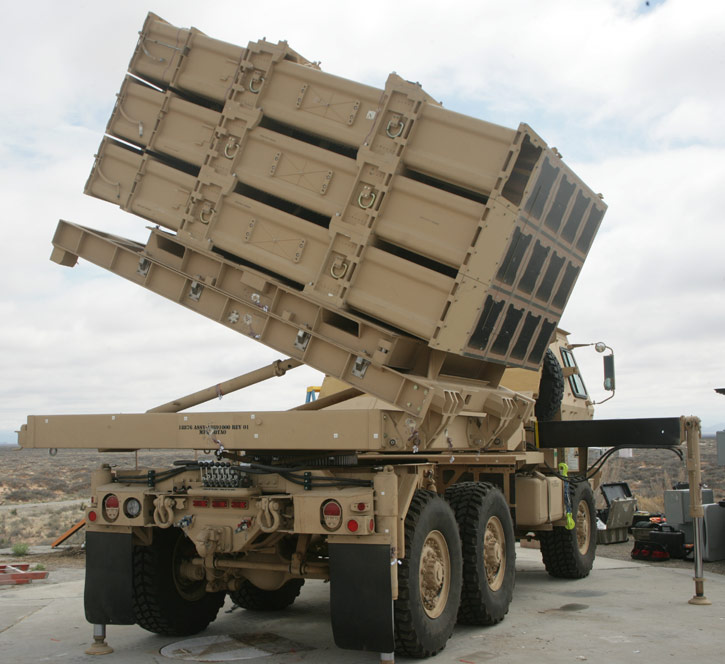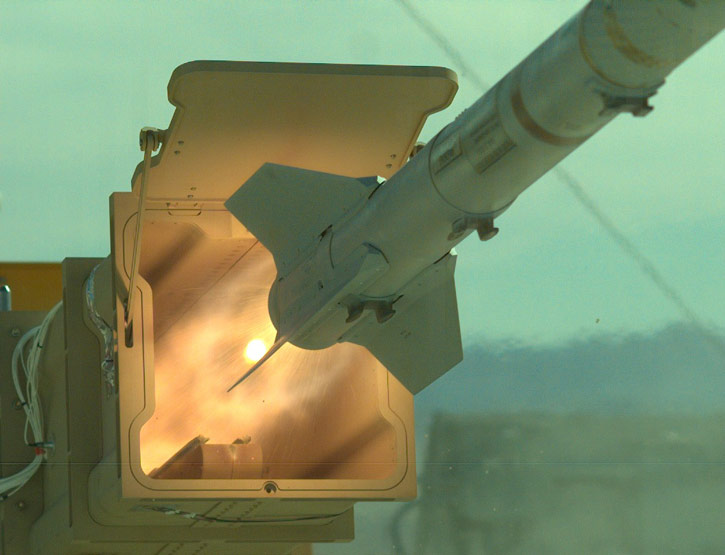
The Israeli Iron Dome missile system completed a successful test firing in the USA. The US Army completed a successful test of Tamir interceptor missile from the new Multi Mission Launcher (MML) developed under a US Army initiative. During the test the missile scored a hit at the target drone. RAFAEL and Raytheon plan to continue adapting the Iron Dome and Tamir interceptor missile to meet the requirements of the Indirect Fire Protection Capability (IFPC).
Prior to the test RAFAEL and its US partner Raytheon made the necessary adaptations to fit the Tamir missile with the Army experimental launcher. According to Lt. Col. Michael Fitzgerald, IFPC Inc 2-I Product Manager, the test was part of the US Army evaluation of different alternative effectors – both domestic and international, and their use with the Army’s new MML.
The MML is an air-defense launcher being developed for the Indirect Fire Protection Capability Increment 2-Intercept program, to provide the U.S. Army 360 degree short-range air defense capability against cruise missiles, unmanned aerial systems, rockets, artillery, and mortars.


The Army MML began Engineering Demonstration testing of different effectors at the White Sands Missile Range in New Mexico in March 2016, launching several types of missiles from the common launcher. Tests started with Raytheon’s Stinger and Lockheed Martin-Raytheon Hellfire–Longbow, continued with Sidewinder AIM-9X missiles and Lockheed Martin Miniature Hit-to-Kill (MHTK) micro-missiles. The test of RAFAEL’s Tamir is the first evaluation of a foreign missile associated with the IFPC Increment 2-I and MML.
For these tests the MML is designed to fire a variety of different interceptor missiles, depending on the threat and is associated with Thales-Raytheon Improved Sentinel MPQ-64F1 radar. When fully deployed, the system will be fully integrated into the Integrated Air and Missile Defense Battle Command System (IBCS) to extend the Army’s “any sensor, best shooter” capability for short-range counter rocket, artillery, mortar and UAS (C- U RAM) defense for deployed forces.
The launcher can rotate 360 degrees and elevate from 0-90 degrees. It consists of 15 tubes, each of which can hold either a single large interceptor or multiple smaller interceptors. Developed using an open systems architecture, the launcher will interface to the IBCS Engagement Operations Center to support and coordinate target engagements. . The Army plans to field the system to two active-duty and seven National Guard battalions beginning in 2019.

The Iron Dome has proved highly capable in actual combat, intercepting over 1500 ballistic rockets since its debut in 2011. It has since evolved to engage targets at longer range, as well as aircraft and UAVs. The Longbow Hellfire missile, originally designed as an air-to-ground tank-killing missile, has recently shown success in destroying Unmanned Aircraft Systems targets. Originally an air-to-air weapon, the Sidewinder AIM-9X is suitable for short-range air defense, and would be most suitable against aircraft and cruise missiles. Developed by Lockheed martin specifically for the IFPC program, MHTK offers maximum launcher loadout due to its small dimensions. It is the only weapon that does not use an explosive warhead, relying on kinetic effect of target impact.
Two of the five intercepts were fully integrated shots, where the target was tracked, the engagement command was sent, the engagement was processed by the launcher and the interceptor was launched. Other launches physically tested the release of the weapon ejection from the system.
IFPC Inc 2-I is a joint collaborative effort between the Army’s Program Executive Office for Missiles and Space’s Cruise Missile Defense Systems (CMDS) Project Office and the Army Aviation and Missile Research, Development, and Engineering Center (AMRDEC).




















